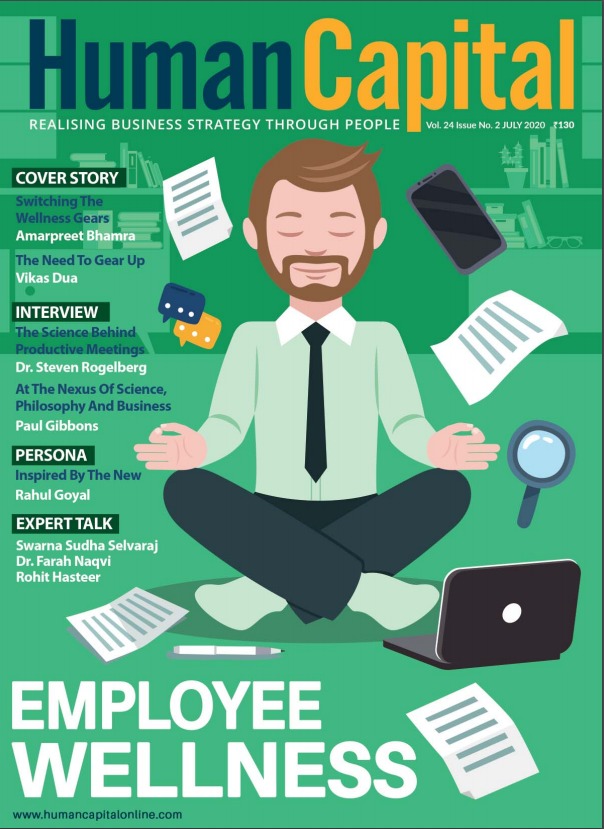Mr. Rajasekhar Chowdary (Rajasekhar), General Manager, Personnel & Administration, Healthy Grow Consumer Care Corporation (HGCCC), is fidgety in his chamber, yet streaks of optimism are seen in his gait. He was waiting for the newly recruited Employee Relations Manager (ERM), Mr. K V Anantha Kumar (Ananth) to apprise him about the Industrial Relations climate at HGCCC. Rajasekhar’s mind is full of questions. “Can Ananth bear the labour pressure? Can he manage the prevalent industrial strife? Can he manage the Unions?”, and so on.
On paper, Mr. Ananth is a Post Graduate in Law with specialisation in Indian Labour Law with five years of relevant experience. The management has recruited him to resolve the Union-Management conflict. Mr. Rajasekhar respected Management’s choice, but felt that Ananth is a raw-hand and it would be an ordeal for him to handle the industrial disputes of the company with such an emphasising and engulfing global presence.
HGCCC is an UK based consumer care company and its core competence is in food and health drinks. It is the largest player in this segment and its products are in vogue for almost hundred years in India. The company has three manufacturing plants in India viz.,’ Ameya’, ‘Ajeya’, and ‘Adviteeya’ in the states of Andhra Pradesh, Punjab, and Madhya Pradesh respectively. It has a total workforce of 3200 people in India. HGCCC has strong marketing and distribution in India and over 600 distributors and 4500 sub-distributors and a direct coverage that reaches 3,00,000 retail outlets. Its flagship product is the health drink, Liplicks, which is a highly respected brand for nearly 100 years. It also has other energy food drinks like Vital, GroActiv, Maltina, etc. and in addition, it markets and distributes prominent household names in Anatacids, Painbalms, Biscuits, Nutribars, Toothpastes, Noodles, etc. In 2008, the Chief Managing Director, India Sub-continent, Mr. Amanaganti Srikant set an aggressive growth agenda for the company called ENVISION 2012, wherein it aimed at doubling the company’s turnover by the end of 2011. In order to achieve the targets of ENVISION, HGCCC needs to have a Compounded Annual Growth Rate of 19.5%. This is the single point agenda for all the manufacturing sites and functions of the Indian sub-continent (including Srilanka, Nepal, Myanmar, Bangladesh, Bhutan, Mauritius, and the Maldives) wherein new strategies that emphasised speed were adopted for execution on a high-priority basis.
The clock struck 10:00 A.M., Rajasekhar adjusted himself and looked at the door, and concurrently, heard a mild knock on the door. Even before Rajasekhar could utter something, the door opened and Ananth entered with a broad grin on his face. He walked up to Rajasekhar, and said, “Good Morning Sir, I am the newly recruited ERM. I was asked by the CEO to meet you and learn about the disputes prevailing here.” Rajasekhar gave a fleeting look at Ananth and found that he has a flashy smile and radiant eyes exuding confidence. He adjusted his voice and smiled and said, “Welcome to the Ameya plant of HGCCC, Ananth! It is a pleasure to have you here. In fact, we all bank upon you to help resolve the present grievances. I hope you are aware of the company’s history vis-a-vis the CMD’s ENVISION, wherein speedy growth is paramount”.
Ananth nodded his head approvingly, and said, “Yes Sir, I do! Please apprise me about the present organisation structure, composition of labour and problems thereof.” Rajasekhar began.
The Ameya Plant in Andhra Pradesh is located near the Industrial Estate and regular production at this site began in 1973. This plant is ISO 4001 and OHSAS 18001 certified. It began its operations with a single line manufacturing, and today, the annual capacity of this plant is 21 kilotons with seven lines in operation. The production has increased 27 times in 2010.
The plant has a functional organisation structure which includes Manufacturing, Engineering, Procurement, WSM & Operational Excellence, Quality Assurance, Finance, Environment Health & Safety, and Personnel & Admin. Around 48% of the workmen at the site are permanent workmen, whose average age is 45 years, 38% temporary workmen (badli workers) with an average age of 38 years and the rest are contract workmen with an average age of about 23 years. A Majority of the workmen have more than 20 years of service at this plant. The Permanent Workmen can be classified into 5 different grades starting from G 4, moving up to G3, G2, G1, and then, Special Grade (G9) employees.
Customarily, this site is known for its complex Industrial Relations (IR) conditions, and it is constantly on the rise. In 1993, there was a prolonged strike by the workmen. Until 2009, there were two registered Unions, namely ‘Krushi Sabha” and ‘Krushi Congress’ here, and the representatives of both the Unions are permanent workmen. Krushi Sabha has existed since the inception of the plant, but, Krushi Congress is 18 years old and both of them have contrasting ideologies. While Krushi Sabha aimed at protecting the aspirations of the working class without ignoring the national interests, Krushi Congress totally carried socialist ideologies. Considering the divergent viewpoints, it is important that a recognised union be present to enter into a 12(3) agreement as per the Industrial Disputes Act, and thus, Krushi Sabha was given recognition.
In order to make up for manpower shortage on a daily basis resulting from absenteeism, leaves, offs, badli workmen are taken and deployed in unskilled positions. All though they were not permanent, most of the badli workmen have put in over 20 years of service. The badli workmen feel that they are being neglected.
The badli workmen under the Union flag of ‘badli krushi’ (of badlis), who formed about 38% of the manpower requirement of the site, have begun to voice their need for voting rights in the forthcoming elections. Their ideologies match with the Union Krushi Sabha as some of them have been the former members for the same.
In order to support ENVISION, it becomes very important to ensure stable IR conditions in the years to come for the smooth operation of new technologies and dynamic changes while remaining competitive. In a manufacturing setup, the buyin of the workmen is indispensable for the flourishing implementation of any programme (technological, changes in manpower deployment, changes in established practice, etc). In a setup that is 38 years old, where most of the employees have more than 20 years of service, this becomes a confirming feature. But, the company’s growth plans require cost-effectiveness with respect to the right size of manpower, productivity improvement, wherein agreeing to implementation of new projects that reduce total batch time, creating a performance culture that includes clear accountability, ownership, operational excellence on the shop floor, ensuring business continuity and future expansion, not compromising on quality health and safety at any step of the process and reducing absenteeism to ensure availability of manpower.
“The IR climate has become the prime concern for the smooth functioning of the site”, Rajasekhar paused, and saw Ananth seriously taking notes. He continued, “The three year Long Term Wage Settlement (LTWS) was last signed in 2007 between Union Krushi Sabha and HGCCC and has come to an end in December 2009. Perfectly, the next settlement should have been signed in January 2010 with the recognised union. But due to a various turn of events in the IR climate of the site, this has not been achievable.” Ananth asked, “What happened, Sir?” Rajasekhar once again continued and started providing the happening of events in chronological order.
The Recognition Status of Krushi Sabha expires in November 2007. But in January 2008, Krushi Sabha requested the labour department for majority verification. Thus, in June 2008, the Labour department announced a secret ballot for the identification of the newly recognised union in September 2008. This is when both the Unions were allowed to contest elections and Badli Krushi Union was rejected. Elections were due before December 2009, since there was the possibility of completion of LTWS in time. In June 2008, the Badli Krushi Union moved the High Court against the order by the Labour department of not involving them in the recognition process, and thereby, an uncertainty had built up with respect to the recognition of the Union. In September 2008, the High Court passed an interim order, in favour of the Badli Krushi Union directing the Labour Department to give voting rights to Badli workmen, and thus, the Labour department postponed the secret ballot elections.
In October 2008, Union Krushi Sabha filed a stay vacate petition to vacate the interim order and openly voiced its dissent against Badli Krushi Union’s interest. In March 2009, new technology to reduce batch time was ready for use and also discussions took place with Krushi Sabha considering that they are the recognised union as elections have not happened. But in April 2009, non co-operation from other union members resulted in the discontinuance of the new technology after 4 days of operation. Conditions were unstable and new technology was not put to use. This sent negative signals to the corporate indicating unstable conditions. The Unions had agreed for its adoption since the project was started in 2008. Starting more new projects would be unthinkable with the stalemate over LTWS. At this time, representatives of all the Unions were called upon to discuss the gravity of the situation. At the same time, Badli Krushi Union filed a contempt of court for the non-implementation of the interim order and were awaiting the final order from High Court. In December 2009, the Labour department issued an order clarifying that pending the High Court Order on voting rights to the Badli workers, the Management may commence negotiations with Krushi Sabha Union, since it is the recognised Union and LTWS could commence in January 2010.
In the same month, all the Unions including Badli Krushi Union individually sought the completion of the 2006 settlement. And the individual charter of demands were also submitted. Krushi Congress demands were not recognised as they do not form a majority, and hence, shall not be called for negotiations, which led to the continuation of the stalemate. In January 2010, Badli Krushi filed a writ against the above order, and the stalemate continued. In February 2010, the High court passed an interim order directing the management to permit Badli Krushi Union in negotiations. In March 2010, Krushi Congress also filed a writ in the High Court for similar relief to participate in negotiations. This weakened the IR situation and the employees were confused as to what lay ahead. In April 2010, Badli Krushi Union submitted its members list to the Management, and in May 2010, Krushi Sabha claimed filing a vacate petition to vacate the interim order and counter affidavit against the Krushi Congress order.
Rajasekhar paused again, and said, “Now we should be able to initiate all 2010 planned projects in time in stabilised IR environment and the need of the hour is to sign LTWS 2010 by July 15th 2010.”
The meeting ended and Ananth shook hands with Rajasekhar and took leave to study the case.
Case Study by Dr. Prageetha G Raju, Independent researcher
Analysis by Ravi Mishra, Senior Vice President-HR for Global Epoxy Business, Aditya Birla Group.
The management of Healthy Grow Consumer Care Corporation (HGCCC) has decided to double its turnover by the end of 2011 and all the functions must necessarily contribute for it. Ananth Kumar and the Employee Relations function must establish smooth relations with the Union to ensure zero man-days loss and acceptance of new projects and implementation of automation and technological changes planned by the company. They must ensure that there is no disruption on the part of the labour union and avert roadblocks to achieve the business targets set by the Chief Managing Director. Rajasekhar is sceptical of Ananth Kumar’s abilities which is the conventional assessment by managers along the lines of the Blue Ocean Strategy. However, he needs to analyse the situation with optimism and support Ananth Kumar with positive vibes. Such positive interventions will help deal with situations in a professional way by addressing the Union’s expectations practically and influence the management to value the stake of the Unions by approving genuine demands.
As a part of Appreciative Enquiry, a manager needs to capitalise on the positives in the system. The average age of 45% of workmen is around 45 years, and also, the majority Union i.e. Krushi Sabha understands the national interest along with their own interest. This will help pursue the agenda of the growth plan decided by the company. There has been no major strike in the company after 1993, which reflects the maturity of the workmen and the union.
This resonates with the fact that the era of industrial strikes by the labour union, in general, has faded at large over a period of time as witnessed from the period between 1970 to late 1980. The Union is sensible and willing to listen which goes in favour of the sustainability of the organisation. This is a great opportunity for Ananth to understand the heart and minds of people sans any bias and help drive a win-win situation. The task is easy once credibility is established and genuine concerns are addressed and solutions are provided through logical means. One has observed that as managers we have our own biases and our behaviours are based on a historical mindset. With the changing times and technological advancements, things that have been successful in the past are necessarily not a valid option, and hence, need to be thoroughly evaluated. Long Term Wage Settlement (LTWS) is passing through the shadow of the Recession, and may help Ananth to pursue the Union by relating to the difficulties of organisations to sustain and survive by leading with examples.
The other aspect of our conservative approach is that we are apprehensive about the smaller details that may not impact the company. It makes sense to establish the credibility of the organisation as one that is concerned about some people at the bottom of the pyramid. As ERMs, we need to play a larger role and need to educate the Union and workmen on how we can align in the interests of all.
The warmth and confidence that Ananth made visible during the meeting with Rajasekhar show that he will be able to handle the IR issues in HGCCC successfully. The latter must have also seen some significant qualities in him during the interaction/interview. Integration of experience and exposure with an outside-in perspective will add value for the organisation at large to pursue the growth trajectory by doubling the capacity by way of contributing through smooth relations with unions and zero loss of man-days.
Analysis By Rohit Hasteer, Group CHRO for Housing.com, Prop Tiger.com and Makaan. com
This is a classic example of expectations misalignment between the employees and the organisation. While the organisation has decided its aspirational goals, the people, however, do not seem to be fully aligned to it. On the other hand, the people, especially the contractual workforce (badli) feel their aspirations and needs are not looked upon, in terms of having equal voting rights. Evidently, the underlying issue has cropped up when the organisation has planned vast growth and changes in the business. From a superficial understanding of the scenario, one may feel that the issue has begun to burn only recently, however, it will be instrumental for the organisation, the IR and the HR teams to understand the chain of thoughts and events which started this strife, first in the heads of the badli workers and then on the ground. There could be multiple causes; lack of inclusion, feeling that the role of permanent and contractual manpower is the same, however, differing benefits, lack of mutual trust, lack of empowerment in decision-making and ineffective percolation of the larger vision has ultimately led to uncertainty. Below are some interventions that would help HGCCC to solve the strife effectively:
Empathise and Understand: In such a scenario, the key step is to listen to people who are aggrieved and understand them by stepping into their shoes. Not only does this help the organisation to gather an understanding, but also helps employees to realise how the organisation cares for them. This can be done through forums, one-on-one connects, anonymous sessions, etc.
Collective Design Thinking: Once the sentiments of the people are captured from empathising and understanding, the next step could be holding a LargeScale Interactive Process (LSIP) to help people to visualise their personal vision and marry the organisation’s vision. This can lead to building passion and enthusiasm for ‘Envision’ in light of addressing their concerns mutually. This activity can act as a strong method of aligning and re-instating the vision by listening to people’s voice via the lenses of communication, transparency and care.
Communication & Transparency: The aforementioned activities will cater to their highest potential only if their philosophies and objectives are communicated frequently, and, if transparency is maintained throughout the employee lifecycle.
Appreciative Enquiry: It is a process through which the organisation can gauge its strengths and understand what has worked out in the past. These positive nuances can be leveraged again to resolve current challenges. There had been a strife in 1993 that the organisation can study to decide its approach and also pick up positive connotations to resolve the current challenge. Further, during the inception of the Ameya plant, there was only one line of production, and the fact that the number of lines grew to seven, reflects the innate talent within the organisation, and can help develop positive sentiment in people.
Re-structurisation: HGCCC presently has a functional structure. Going forward, the organisation aims to reduce batch time and increase productivity. Switching to the matrix structure where people can be assigned new lines and batches basis the hours of availability would enable the organization to streamline the production process. Revisiting Benefits & Policies: While HGCCC plans to double its turnover in a span of three years, revisiting policies and benefits can bring around high impact solutions to tackle the current strife. As the badli workers have been with the organisation for around 20 years, giving voting rights to certain higher grades and tenured people can be one of the stepping stones to resolution.
Upskilling & Re-skilling: As HGCCC plans to use cutting edge technology and upscale its process, it will be essential for the organisation to invest in re-skilling and upskilling its people. Demo sessions, learning workshops and dry runs can be effective in transferring the learnings. The mentioned practices shall ensure that badli workers develop a feeling that their voices are heard and are passionate about their work by understanding how they are contributing to the larger vision. It also ensures that their needs are being addressed by the organisation in the best possible way.
Has COVID-19 forever changed the way we live and work?
Trending
-
SBI General Insurance Launches Digital Health Campaign
-
CredR Rolls Out 'Life Happens' Leave For Its Employees
-
Meesho Announces 30-Week Gender-Neutral Parental Leave Policy
-
Microsoft Unveils Tech Resilience Curriculum To Foster An Inclusive Future
-
60% Indian Professionals Looking For Job Change Due To COVID: Survey
-
SpringPeople And Siemens Collaborate For Digital Transformation Push
-
86% Professionals Believe Hybrid Work Is Essential For Work Life Balance: Report
-
Almost 1 In Every 3 People's Personal Life Affected Due To Work Stress
-
Meesho Rolls Out Reset And Recharge Policy For Employees
-
80% Of Talent Leaders & Academics Say Pandemic Changed Skill Needs For Youth: Report
-
Hero Electric Rolls Out 'Hero Care' Program For Employees
-
Human Capital In Collaboration With ASSOCHAM Hosts Virtual Conference
-
IKEA India, Tata STRIVE Collaborate To Create Employability And Entrepreneurship Opportunities
-
SAP India, Microsoft Launch Tech Skilling Program for Young Women
-
DXC Technology, NASSCOM Collaborate For Employability Skills Program
-
Lenskart To Hire Over 2000 Employees Across India By 2022
-
Mindtree Launches Learn-and-Earn Program
-
Tata AIA Extends 'Raksha Ka Teeka' To Its Employees
-
Swadesh Behera Is The New CPO Of Titan
-
NetConnect Global Plans To Recruit 5000 Tech Professionals In India
-
Hubhopper Plans To Hire 60% Of Indian Podcasters By 2022
-
Corporate India Needs More Women In Leadership Roles: Report
-
Aon to Invest $30 Million and Create 10,000 Apprenticeships by 2030
-
Tech Mahindra Launches ‘Gift a Career’ Initiative for Upskilling of Youth
-
40% Women Prefer Flexible Working Options in Post-COVID World: Survey
-
3 out of 4 companies believe they can effectively hire employees virtually: Report
-
Vodafone , CGI and NASSCOM Foundation launch digital skills platform
-
Odisha: Bank, postal employees to deliver cash for elderly, differently-abled persons
-
Skill India launches AI-based digital platform for "Skilled Workforce"
-
Hiring activity declines 6.73% in first quarter: Survey
-
70% startups impacted by COVID-19 pandemic
-
Bajaj Allianz Life ropes in Santanu Banerjee as CHRO
-
Over 70 Percent MSMEs look at cutting jobs to sustain businesses
-
93 Per Cent employees stressed about returning to office post-lockdown
-
Johnson & Johnson India announces family benefits for same gender partners
-
Indian firms turning friendly towards working mothers
-
Welspun India names Rajendra Mehta as new CHRO
-
Wipro partners with NASSCOM to launch Future Skills platform



Human Capital is niche media organisation for HR and Corporate. Our aim is to create an outstanding user experience for all our clients, readers, employers and employees through inspiring, industry-leading content pieces in the form of case studies, analysis, expert reports, authored articles and blogs. We cover topics such as talent acquisition, learning and development, diversity and inclusion, leadership, compensation, recruitment and many more.
Subscribe Now














































Comment